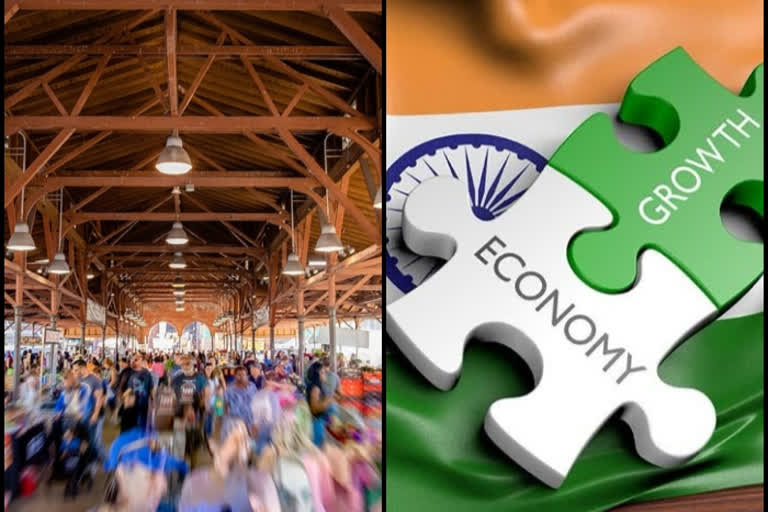Hyderabad(Telangana): The country's census process, conducted every 10 years, is due which will begin on April 1 this year. The population has been counted six times since independence. This time, a demand to collect caste-wise details has come to the forefront. The economic growth of a country achieved through the efficiency of its human resources is considered its 'demographic dividend'.
In recent years, national and state-level parties have been widely throwing assurances of welfare schemes. Population details are essential to formulate those schemes along with the creation of reservations.
Quality education is indispensable for achieving social change. Thereby, efficient human resources will be available. If contrary results are achieved, the same population becomes a bane to the country. According to the United Nations World Population Report (2019), India's population will cross China by 2027 and top the chart.
India has been implementing family planning programs for 50 years for population control. These measures have failed to identify the social and economic aspects that are driving population growth. The challenges posed by population growth need to be analyzed from a new perspective. The general assumption is that if the population grows, the per capita income of the people will decrease and the country will become poor. The attitudes, lifestyle and needs of people have changed in the 21st century. Parents once looked upon children as a future source of income, and support at the old age. Hence, they were inclined towards them.
Read: Govt nod to 'decriminalize' Companies Act; 65 sections to be changed
With the advanced medical facilities, the death rate has come down. The illiteracy and age-old traditions of the population have led to overpopulation. Different races, religions and cultures have also contributed to the population growth.
India has been recording lowest population growth rates in Asia. The population growth was 2.1 per cent during 1951-71, 2.2 per cent during 1971-91. Between 1991 and 2011 it was down to 1.8%, and between 2011 and 2016 there was a further slowdown to 1.3%. According to the Economic Survey (2019), the average annual population growth was 1.1 per cent in 2011-12. It is projected to grow by 0.7 per cent in 2021-2031 and 0.5 per cent by 2031-2041.
It is well known that there are fewer women than men in terms of gender ratio in the country. The number of young people in our country is growing steadily. Over the next decade, the workforce within the age group of 20-59 years will make up the bulk of the population. By 2041, the average age will be 59 years. According to the 'Sample Registration System data', Bihar, Uttar Pradesh, Haryana, Madhya Pradesh, Jharkhand and Chhattisgarh should take steps to decrease and stabilize population. Quality of life, demographic dividends, urban population growth and income inequality are some of the future challenges. According to the 'India Aging' Survey Report (2017), 60-year-olds accounted for eight per cent in 2015 and by 2050, their number will rise to 19 per cent.
People need to evolve into competent human resources. To achieve this, a wide range of reforms in primary and higher education is essential. Research orientation should be encouraged in students. Programs such as 'Skill India' can help develop skills in young people which should be a continuous process. Vocational education skills should be provided to strengthen the rural economy. Rural medicine should be strengthened to detect disorders at the initial stage. Ultimately, they have to be made as wealth creators by harnessing competent human resources. The country has been seeing shades of economic slowdown for some time. Yet there has been a consistent inflow of foreign exchange from almost all overseas employees.
Read: Centre steps up efforts following spread of coronavirus in India
At times like this, it will be evident that expert human resources are strength to the economy of the country. China has the largest population in the world. Yet, people have gained all the qualities to become the world's major power by sharpening their skills in all spheres. It is now throwing a challenge even to America. China is an example to prove that even skilled overpopulation can be a boon to a country. In contrast, overpopulation can be a curse, if it is not efficient and resourceful. So India must be vigilant in this regard. It is well known that if a woman is educated, the entire family will be educated. The schemes like 'Beti Padao Beti Bachao', well implemented, can turn them into a wealth of human resource and contribute to the nation's economic development. These kinds of programs provide the country with a 'demographic dividend'. Employment prospects will improve and unemployment will decline. Economic growth will be a reality. So the schemes implemented by the government must be able to turn the citizens as centres of wealth creation. The economy of the country will be strengthened only by the wealth of competent human resources and only then population growth can be a boon.



